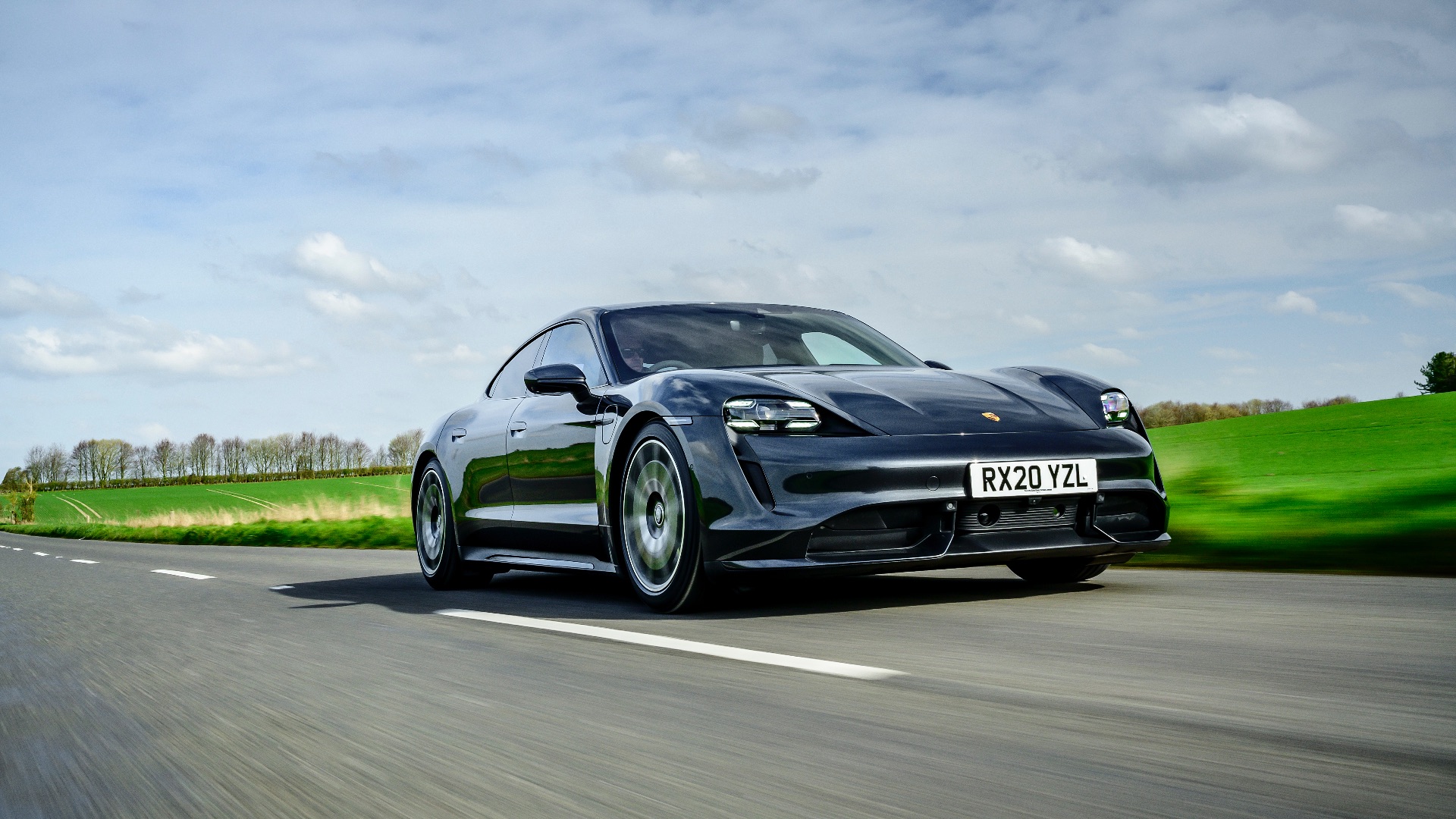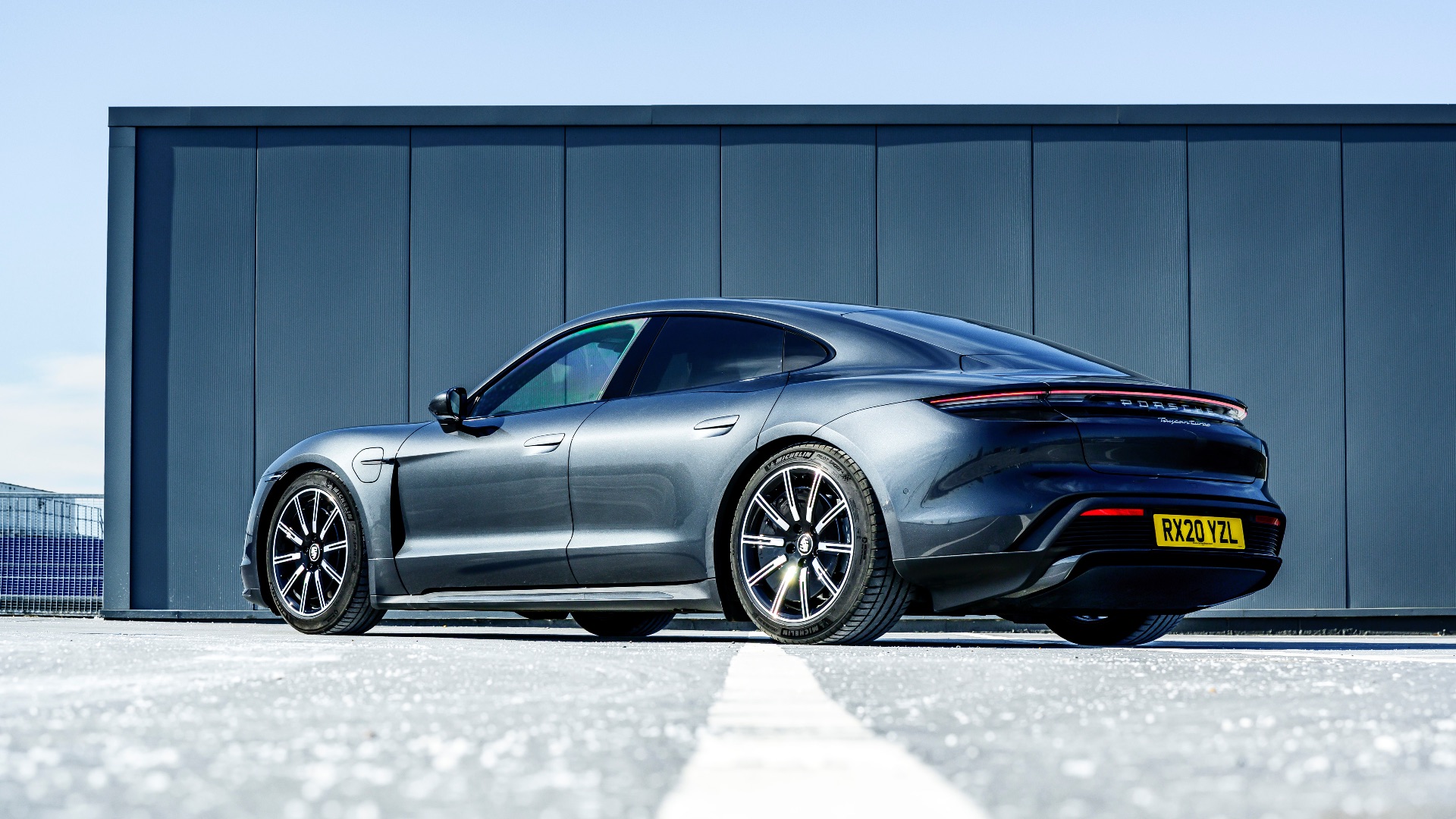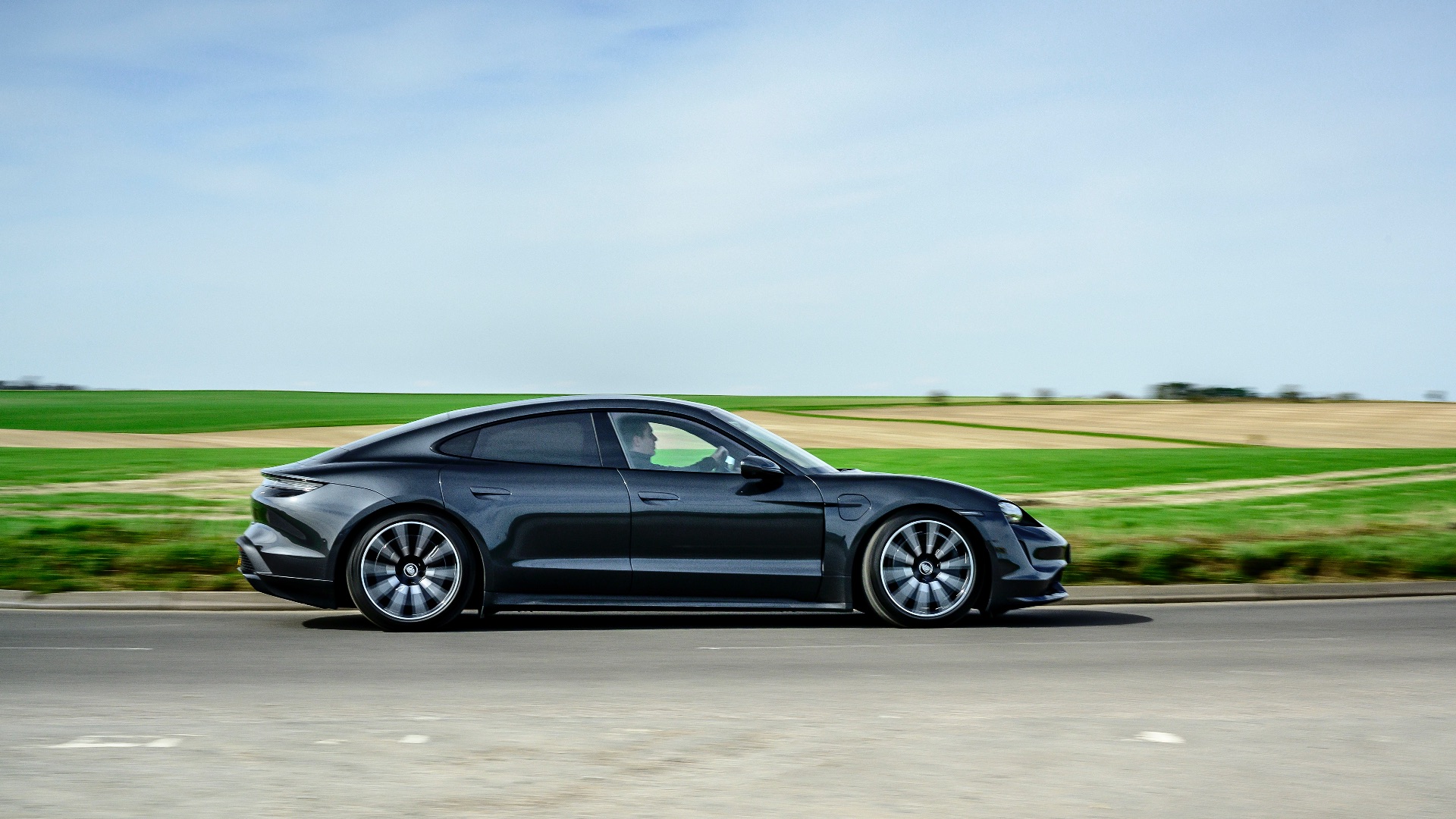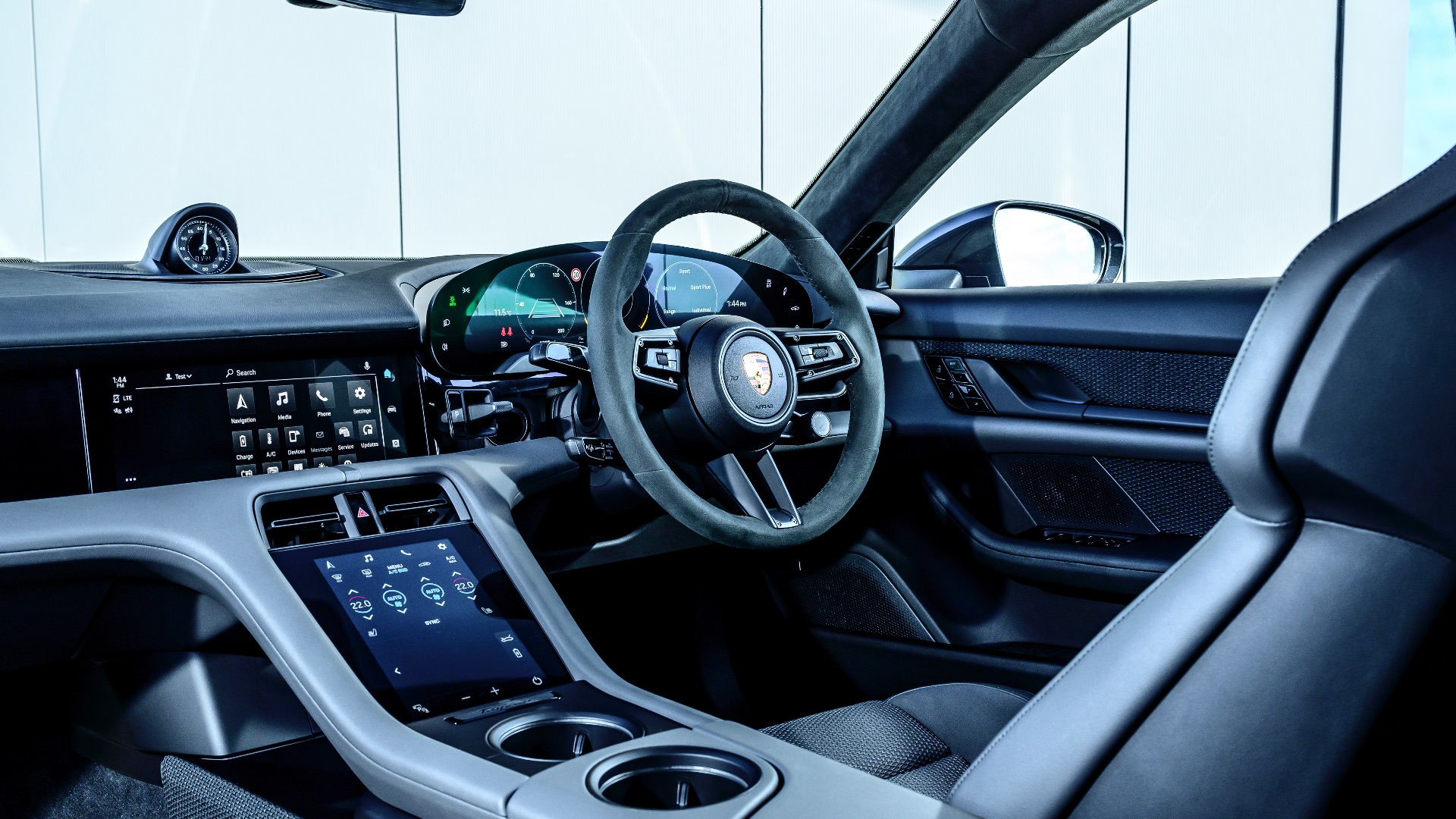
Tesla launched its Model S way back in 2012, but the establishment still hasn’t caught up. Well, not literally.
Select Ludicrous Mode and the flagship Model S Performance rockets to 62mph in 2.6 seconds. Swap into the new, all-electric Porsche Taycan Turbo S, dial up Launch Control, and you’ll need an extra 0.2sec for the same party-trick. The Tesla also travels further than the Porsche on a full charge (396 miles vs. 256 miles) and costs a whopping £42,036 less to buy.
Case closed, then? Not quite. Straight-line speed is all very well, but the Taycan (say it ‘Tie-can’) is the first EV I’ve driven that doesn’t underwhelm the moment you turn a corner. Despite weighing as much as a Range Rover, it still steers, stops and stimulates like a Porsche.
The Model S will be first past the post, but in terms of emotional appeal – something you can’t measure with a stopwatch – it finishes a distant second.
A Turbo with no turbo

The Taycan range follows a familiar hierarchy, starting with 4S (£83,367), then Turbo (£115,858) and Turbo S (£138,826). Pedants will note that, being electric cars, there’s no actual ‘turbo’ in sight – but frankly Porsche muddied these waters long ago with the turbocharged 911 Carrera and 911 Turbo.
My test car was the middle-ranking Taycan Turbo, which packs a 93.4 kWh battery, two electric motors and four-wheel drive. Total output is 625hp, or 680hp for short periods on overboost.
Confession time: notwithstanding what I’ve just said, within minutes of leaving Porsche HQ, I’ve already attempted a maximum-attack, Launch Control start. The Turbo may ‘only’ reach 62mph in 3.2 seconds, but that’s still stupendously quick. Supercar-quick.
With no gears to shift and a muted whoosh from the e-motors, the experience is oddly serene. Like the Millennium Falcon making the leap to light speed, it doesn’t so much accelerate as teleport from one location to the next.
Electro soundtrack

The bits in-between are fun, too. On roads where a Tesla would seem stodgy and aloof, the Porsche feels agile and immersive. Switch into Sport+ mode and the whole car tenses, three-chamber air suspension and a low centre of gravity banishing even a hint of body-roll.
Its steering is superb and the carbide-coated brakes feel mighty. And while I initially missed the hard-rock howl of a Porsche flat-six, I soon grew to like its subtle electro soundtrack.
Well, this certainly makes me feel more excited about an EV future.
— Tim Pitt (@timpitt100) June 8, 2020
Hadn’t noticed how similar the Taycan’s side window graphic is to a 911’s. pic.twitter.com/SI1DeK00nc
The Taycan also appeals in other ways. It looks impossibly sleek and futuristic: a concept car for the road. And its cabin feels special, with typically Teutonic quality and three crisp touchscreens dominating the dashboard. Spec four-zone climate control and even the rear passengers get one.
You feel cocooned by the high centre console, but there’s ample room for four adults, plus a moderately sized boot at both ends. If you need more space, wait for the SUV-styled Taycan Cross Turismo – due in 2021.
Leading the charge

If the Taycan has an Achilles’ heel, it relates to charging. Its 800-volt power supply is twice that of most electric cars, and can charge at up to 270kW. In practical terms, that means going from five to 80 percent full in 20 minutes.
However, the Ionity network – a joint project between Mercedes-Benz, Ford, BMW and Porsche’s parent Volkswagen Group – only offers a handful of suitable ultra-rapid chargers at present. Four hundred are planned for major roads across Europe, but that still pales in comparison to Tesla’s near-2,000 Supercharger stations.
If you love driving, this is the best EV you can buy. That sounds like damning with faint praise, but don’t underestimate what an electrifying car (sorry) the Taycan is.
If I had a driveway – and thus could charge at home – I’d choose one over a Panamera, or indeed any Porsche SUV. Suddenly, the future looks a bit brighter.
ALSO READ:
Porsche 911 Carrera (2020) review